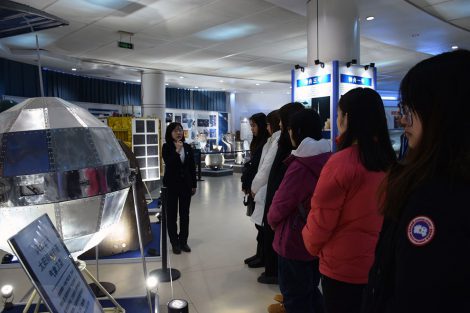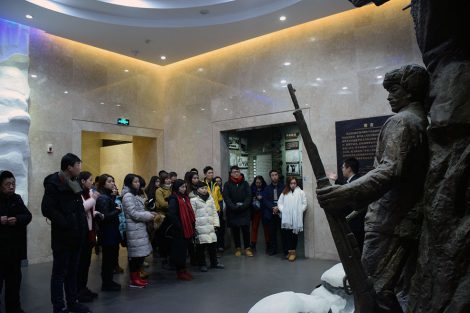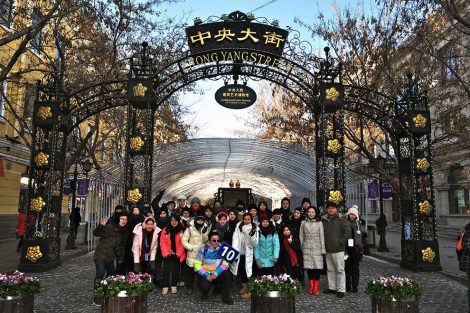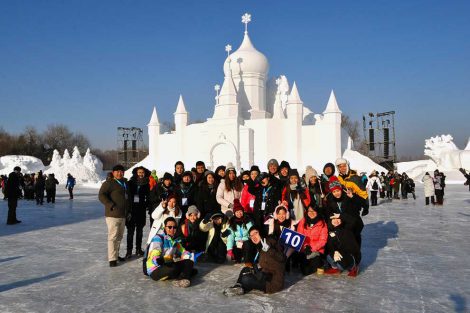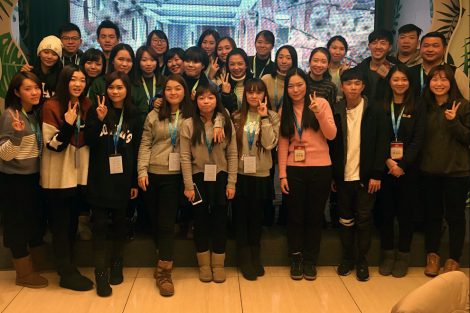Some 28 IFT students participated in the 14th Little Satellite Scholar Scheme and 3rd Kuaizhou (Satellite) Scholar Winter Study Camp from 25 to 31 December. The camp took place in Harbin, in Heilongjiang province, a city dubbed the “Moscow of the Far East”.
The event was part of the “Ten Thousand People’s Scheme” of the Ministry of Education of the People’s Republic of China to teach Macao and Hong Kong students more about Mainland China. It was organised by the Harbin Institute of Technology.
The study camp was attended by about 600 students from higher education institutions from the Macao SAR, the Hong Kong SAR and Chinese Taiwan. It aimed to provide participants with opportunities to learn more about the culture, history and latest developments of the Harbin Institute of Technology, Harbin and Northeast China. Another goal was to foster friendly ties between students.
During the event, participating IFT students attended 3 lectures. The first lecture was on the development of China’s space industry and on satellites. Students learned about the latest projects in space exploration by the Chinese Government and about the country’s leading role in the field.
The second lecture focused on revolutionary martyr Zhao Yiman, who was executed by the Imperial Japanese Army during the occupation of Northeast China between 1931 and 1945. The final lecture featured the stories of those who – through huge sacrifice – helped transform the barren land of Northeast China into a fertile cropping area.
The IFT students also visited several museums featuring exhibits of historical significance including museums at the Harbin Institute of Technology, a museum documenting human experimentation by the Japanese Imperial Army’s Unit 731 and an exhibition documenting the Northeast United Resistance Army.
These museum visits allowed students to learn more about the role of the Harbin Institute of Technology in promoting the development of China. The activities also helped students better understand the devastation and trauma inflicted on Northeast China and its people during the Japanese occupation and the role Chinese people played in fighting their occupiers under the leadership of Chinese Communist Party.
“I was really impressed,” says Angus Cheok, an IFT student that attended the events in Harbin. “These museums have allowed me to understand how people’s life can be when a country is invaded, the hardships they face and how important peace is.”
The study camp also featured visits to famous landmarks in Harbin, including the city’s Central Street in the old central district of Harbin, the Saint Sophia Cathedral and the Songhua River. In addition, IFT students were able to better understand the historic ties between China and Russia while visiting some of the historic buildings in Harbin featuring Russian architectural influences.
Other highlights of the study camp included a visit to Sun Island to enjoy wintery ice and snow artworks, and snow sports at the Hulan River Estuary Wetland Park. These activities offered a first-hand experience of the lifestyle of the people of Northeastern China.
“I have enjoyed a lot of first-time experiences in this trip, such as appreciating ice and snow sculptures and having fun on the frozen surface of Songhua River,” says IFT student Miki Lon. “I will never forget these precious memories.”
The weeklong programme has helped broaden the horizons of its participants and strengthened their understanding of Harbin and Northeast China. The highly rewarding cultural exchange programme also allowed them to establish ties with members of the Harbin Institute of Technology and other higher education institutions.
By IFT Lecturer Mr. Xing Fang



